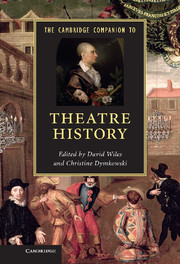9 - Traditional theatre: the case of Japanese Noh
from Part III - Where?
Published online by Cambridge University Press: 05 February 2013
Summary
This chapter addresses the question of how we position ‘traditional’ theatre within a historical narrative that is likely to be constructed in linear terms and to be framed around the nation-state. Japanese Noh theatre offers a particularly interesting case study because it is self-evidently ‘theatre’ in terms of all normal Western definitions – Noh plays being based upon crafted literary scripts and offering the audience stories about distinctive characters – yet it sits outside the evolutionary narrative explored in Part II of this Cambridge Companion, which runs from twentieth-century modernist theatre back to the ancient Greeks.
In 1868, at the dawn of the Meiji restoration that overturned the military regime of the Tokugawa shogunate and restored the central position of the Emperor, Japan opened its borders to the outside world after more than two centuries of almost complete closure. It is during this period that notions of Noh theatre started to circulate in Europe and North America through the accounts of the few who visited Japan, mostly diplomats and literati. Noh performance was initially ridiculed because of its performative means, such as the use of masks and the melange of mime and dance, regarded as primitive by spectators used to the late nineteenth-century naturalistic stage. Noh was an antiquity seen through the lens of the archaeologist (see Fig. 14).
- Type
- Chapter
- Information
- The Cambridge Companion to Theatre History , pp. 136 - 148Publisher: Cambridge University PressPrint publication year: 2012
References
- 1
- Cited by

